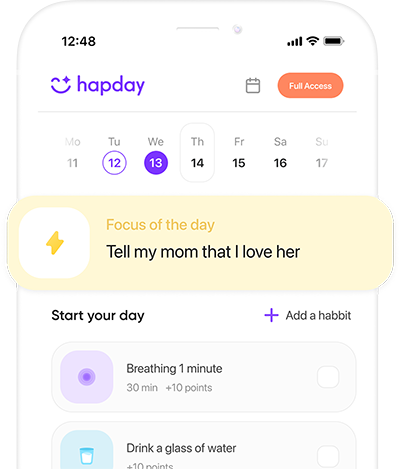Table of Contents
- Understanding Depression and Anxiety
- The Science Behind Journaling
- Techniques for Effective Mental Health Journaling
- Integrating Journaling into Daily Routine
- Overcoming Common Barriers to Journaling
- Conclusion
Journaling—for some, it might just seem like jotting down random thoughts or doodling in the margins, but trust me, it can be so much more, especially when it comes to mental health. It’s not just a way to kill time when you’re bored or to keep track of what you had for breakfast (though, if you’re into that, more power to you). For those struggling with depression or anxiety, it can really be a lifeline. So, let’s dive into this—consider it a personal tour through the intersections of pen, paper, and peace of mind.
Understanding Depression and Anxiety
Before we get lost in techniques, let’s talk about what we’re up against. Depression? It’s not just a fancy word for feeling down. We’re talking about deep, sometimes crippling sadness that can stick around way longer than you’d like. Anxiety’s no walk in the park either—it’s like having an over-caffeinated brain, worrying about tomorrow’s problems or, let’s face it, creating totally hypothetical ones. Fun times, right? According to the World Health Organization, more than 264 million people around the globe deal with depression. Anxiety? Add about 284 million souls to that count. These aren’t just numbers, folks—these are real lives being sidelined. Now, there are the usual treatments—meds, therapy sessions—and don’t get me wrong, they’re super important. But journaling? It’s the underdog that deserves a moment in the spotlight.
The Science Behind Journaling
You might wonder, what’s so magical about putting pen to paper? Well, I kid you not, science backs this up. The “Journal of Clinical Psychology” (yeah, the big guns) found that expressive writing—spilling your heart out about emotional experiences—can slash symptoms of depression and anxiety. Similarly, if you’ve ever heard of the University of Rochester Medical Center, they confirm that journaling sorts out overwhelming emotions like a charm and even clears mental fog. It’s kind of like Marie Kondo-ing your brain, except it costs a lot less and doesn’t clog up your Netflix list.
Techniques for Effective Mental Health Journaling
Here’s where I offer my two cents on some ways to get this journaling show on the road.
- Free Writing or Stream of Consciousness
Dive in with no restrictions. Let your thoughts flow—like turning a tap on full-blast. It’s messy, it’s liberating. Schedule about 15 to 20 minutes. Ugh, grammar? Who needs it.
Benefits: Feel lighter. Thoughts unburdened. Clarity—finally. - Gratitude Journaling
Give props to the little things. Trust me, a piping hot coffee can be life-changing. A study from—wait for this—the “Journal of Happiness Studies” shows gratitude can actually lift spirits. Write three things you’re thankful for and see your perspective start to shift.
Benefits: Positivity becomes contagious. - Cognitive Behavioral Journaling
Face those negative Nancies in your brain. Pen down distressing thoughts, analyze them, and flip them on their heads. It’s a bit CBT-ish, and honestly? It works.
Benefits: Spot distortions like a pro; reframe thoughts, reduce anxiety. - Mood Tracking Journals
Make sense of emotional roller coasters by tracking patterns and triggers. Look out for those low periods, and devise plans to better manage them.
Benefits: Knowing what triggers those blues means you’re in a better place to dodge them. - Art Journaling
Words not your thing? Sketch it out. Whether it’s doodles, colors, or a whole Pollock-esque canvas. Art reaches places words sometimes can’t.
Benefits: Visual liberation. Self-awareness through scribbles. - Goal Setting and Reflection Journal
Aim for the stars. Or maybe the ceiling—start small. Set goals, reflect, adjust, progress. Even the smallest win counts.
Benefits: Direction and purpose, key to kicking depression’s butt. - Letter Writing
Write a letter to your fears. It sounds cheesy, but it can be cathartic. Sometimes you may send them (or not), but the act itself can be healing.
Benefits: Get closure, find peace, maybe even forgive.
Integrating Journaling into Daily Routine
How to make journaling stick in the day-to-day? It’s easier than you think.
- Set a Timeslot: Morning musings or evening reflections—it’s your call.
- Create Comfort: A cozy nook, a favored pen; make it personal.
- Patience Required: This isn’t an instant fix. Be kind to yourself.
Overcoming Common Barriers to Journaling
You’ve got your pen, your time, what stands in the way? Sometimes it’s the fear of being judged—even by yourself. So, put that out of your mind.
- Fear of Judgment: Remember, no one’s grading this.
- Emotionally Stuck?: Start with prompts or bullet points.
- Low Motivation?: Reward yourself post-journal with something nice.
Conclusion
So there you have it, journaling—not just some trendy notion. When used alongside traditional treatments, it can be pivotal in lifting those heavy mental clouds. Whether you’re brand new or a seasoned scribbler, remember, it’s one step at a time. In a world of increasing mental strife, the written word stands as a lighthouse. Write your way toward healing; your future self will thank you.


I absolutely love the idea of journaling as a mental health tool! It’s amazing how writing can help you process your emotions. I’ve been using gratitude journaling, and it has genuinely shifted my perspective. Just writing down three things I’m thankful for each day makes such a difference. Has anyone else found this helpful?
Totally agree! Gratitude journaling has been a game-changer for me too. It’s like turning on the light in a dark room!
While I see the benefits of journaling, I sometimes wonder if it really works for everyone. For me, writing feels like a chore rather than therapy. I guess we all have our own paths to mental wellness!
I’m so excited to try art journaling! Sometimes words just don’t cut it for me, and expressing myself through art sounds liberating. Anyone have tips on how to start?
Start with what you feel! Use colors that represent your mood and don’t worry about making it perfect.
*Definitely* recommend starting with doodles! Just let your hand move and see where it takes you.
‘The Science Behind Journaling’ section was fascinating! It’s reassuring to know there’s research backing this practice. Makes me want to dive deeper into why writing is so effective for mental health.
“Cognitive Behavioral Journaling” sounds like a powerful technique! Facing those negative thoughts head-on can be tough but seems necessary for progress. Have any of you tried this method? What were your experiences?
*Yes!* I’ve used CBT techniques in my journal and found it super helpful for reframing my thoughts.
I absolutely loved this article! Journaling has been a game changer for my mental health. The way you explained the benefits, especially with gratitude journaling, really resonates with me. It’s amazing how writing down simple things can shift your perspective. I encourage everyone to give it a try; it’s like therapy but without the bill!
Really? Journaling is supposed to be some kind of miracle cure now? I’ve tried it and honestly, it felt like just another chore on my to-do list. Sure, maybe it helps some people, but suggesting that it’s the answer for everyone seems a bit oversimplified. Let’s not kid ourselves about its efficacy.
I think you’re missing the point. It’s not about being a miracle cure for all but rather an additional tool in managing mental health alongside other methods. Everyone’s journey is different, and what works for one may not work for another.
Right? Because why do something as simple as journaling when you can just scroll through social media and feel worse instead! That sounds so much more productive.
The scientific backing for journaling is compelling! I appreciate how you referenced studies from reputable sources like the Journal of Clinical Psychology and University of Rochester Medical Center. It adds credibility to an often overlooked method of managing mental health issues.
‘Art journaling’? Really? So we’re just doodling our way to emotional enlightenment now? I can already see my therapist rolling their eyes at this suggestion. But hey, if scribbling helps someone feel better, who am I to judge?
‘Doodling’ might sound trivial, but many studies show that creative expression can lead to significant emotional breakthroughs! Sometimes art speaks where words fail.
‘Doodle your feelings away!’ Sounds like the new self-help slogan of the year! Next up: finger painting your way through life crises!
This post made me reflect on my own experiences with anxiety and how overwhelming it can be at times. However, reading about various journaling techniques provided practical ways that I hadn’t considered before—especially cognitive behavioral journaling and mood tracking journals.
It’s great to hear that you found value in those techniques! They’re effective tools that many overlook in their journey towards better mental health.
I’m really not convinced about this whole journaling trend—seems like just another fad in the self-help world meant to distract us from real issues we should be tackling head-on.
It’s understandable to feel skeptical! But sometimes these ‘fads’ have roots in genuine psychological benefits that can aid many individuals struggling with their mental health.
The points made in this article are well-articulated and serve as a reminder of how important it is to take care of our mental health through all means possible—including writing down our thoughts and feelings.